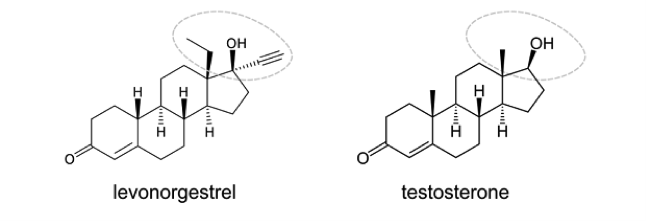
02 Aug 5 signs your HRT isn’t working for you
Navigating menopause can be a minefield. Many women are determined to go the “natural” route but end up with such life limiting symptoms they find themselves in front of their GP being given HRT. Here we discuss the main 5 signs that your HRT isn’t working for you.
For some, HRT is a life saver. For others however it is just a continuation of the misery that led them to taking it in the first place.
Before we get into the signs that your HRT might not be right for you, it is important to understand what is happening to your body during menopause.
Menopause (or more technically peri to post menopause) is a time where massive changes occur in the levels of our three hormones: Oestrogen, Progesterone and Testosterone.
- Oestrogen is an exciter hormone. It gives us energy and promotes healthy weight, boosts libido, ensures ovulation, boosts mood and protects our heart.
- Progesterone is a calming hormone. It lines the uterus to hold a pregnancy, it is important in fertility, it regulates our cycle and helps with mood.
- Testosterone is also an exciter hormone. It is responsible for libido, energy, and also lovely thick hair!
The first real symptoms start in peri menopause when progesterone drops, and oestrogen levels are “higher” than progesterone. This is called “oestrogen dominance”.
These symptoms can be difficult to spot and anything from disturbed sleep, lack of libido, lack of energy, weight gain and mood swings to name but a few.
As peri menopause progresses the symptoms start to increase alongside a stack of other (non) delightful things including itchy scalps, confusion, memory loss, lack of confidence, increased food intolerances, headaches and period irregularities until finally some of the big things start to happen like full on insomnia, the hot flushes, night sweats and vaginal dryness.
It is usually when the sweats or insomnia get so bad that life becomes difficult that women end up seeking help from the GP and prescribed one of the current HRT offerings such as the Mirena coil, the oestrogen patch or gel or a combination pill and off we are supposed to skip all fixed again.
Except for some women this becomes a nightmare of its own.
What are the signs your HRT isn’t working for you?
1) You are tired ALL the time.
And not just tired, you are exhausted and feel like you are dragging yourself around.

This is often because the oestrogen used in HRT is the most active form of oestrogen and it’s also a pretty big dose of it. This oestrogen is very stimulating. If we have already been dealing with quite a lot of stress, our nervous system can struggle to deal with this much stimulation.
This is compounded with the fact that during menopause our liver begins to struggle to remove the unused hormones in our body and we start to get a build-up. With the high doses of this very active oestrogen that can happen quickly, and our body can become overwhelmed.
This toxicity is also seen by the body as a “stressor”. In response to any stress our body produces the hormone cortisol. Cortisol is designed to get us out of danger by switching on our “flight or fight” mode but being in this mode 24/7 leads us to becoming utterly exhausted.
2) You are experiencing problems with your sleep

For some women this is a huge issue. It usually has three causes.
The first cause is that we are in that “fight or flight” mode mentioned above which hugely affects our sleep.
The second cause is because our blood sugars are imbalanced which in turn creates more stress hormone to be produced (more on this shortly).
The third cause is really important to know because it’s actually the cause of MANY issues with synthetic HRT. Not only do we have the oestrogen dominance issue mentioned above we are also having to deal with pretend progesterone in most HRT at a time when we need real progesterone. But why is this a problem?
Pretend progesterone
The progesterone in most HRT isn’t really progesterone. It’s a synthetic called Progestin. (also called drospirenone, levonorgestrel, or medroxyprogesteron).
The image below shows the difference between levonorgestrel, which is the progestin used many oral contraceptives, implants, Mirena IUD, and the morning-after pill and natural progesterone.

Chemically these are totally different. Levonorgestrel is actually more similar to testosterone than progesterone, which is problematic because progesterone is a calming hormone whereas testosterone is an exciter hormone.

This “exciter” hormone means we end up overstimulated and “tired but wired” because we don’t have the biochemistry we need to relax and unwind, leading to disturbed sleep or full on insomnia.
This “pretend progesterone” issue is also important because of how the hormones affect the body.
Progesterone:
- beneficial for cardiovascular health
- stimulates hair growth
- calms mood and promotes sleep
- prevents breast cancer
Progestin:
- increases the risk of fatal blood clots
- can cause hair loss (due to its similarity to testosterone)
- may cause anxiety and depression
- increases the risk of breast cancer
So that would seem a pretty clear reason to avoid the synthetics eh? Surprisingly there is a natural (body-identical) progesterone available from your GP (this is called Utrogestan in the UK) and some women are offered this straight away, but most are offered the synthetics and often refused the natural one. Sadly, there seems to be no rhyme or reason to this and requires education on the part of the patient and the courage to request what feels like the right path.
3) You are struggling with your weight despite doing everything “right”

Ahhh the famous menopause “occult weight gain”. You are eating carefully and working out and STILL you put on weight. It’s maddening!
This is one of the most common complaints during menopause. The problem with most mainstream thoughts around diet is that “calories in/calories out” is the answer.
This is really flawed science at every stage of life but it’s even more incorrect at menopause.
The way we process food comes down to a variety of factors. In Functional Kinesiology we focus on what is called “The Triangle of Hormonal Health”
For us to have OPTIMUM health we need to have all the sides of the triangle in balance. That means that our blood sugars are stable, our stress hormones are under control and our sex hormones are balanced. Sadly, the modern world doesn’t really make that easy.
Today’s diets are very carb heavy leading to unstable blood sugars. Even if your diet is spot on, most of us are navigating stressful lives so we are overproducing all that cortisol and then if we add in something like menopause to the mix we have imbalance in every part of the triangle ( we can have sex hormone instability before menopause due to the massive amount of oestrogen in our environment and toiletries).
Cortisol itself can create such blood sugar instability that an imbalance with this hormone alone can cause diabetes because it makes insulin stop doing its job. This is called “Insulin resistance” and it is common in menopause. So, when we become more “insulin resistant” we keep making more insulin because our blood sugars are high, and we are trying to reduce them, but this excess starts to flood our blood stream. At this stage, the job insulin becomes really good at is its job at storing fat, and thus, the menopause weight gain happens.
In terms of the triangle: Cortisol stimulates insulin, elevated oestrogen also stimulates insulin and elevated oestrogen also stimulates cortisol. It’s a vicious cycle and the synthetic oestrogens in HRT are really contributing to it. Again, this is a time where natural progesterone would help because of its calming effect on the body but the synthetics are contributing to the cortisol stimulation because they are stimulating.
4) Lacking Libido

To be fair menopause doesn’t always feel like the sexiest time in a woman life but it’s even worse if we are on the wrong HRT.
Part of the issue here is not only are we struggling with all the stimulation overload and the fallout it’s causing throughout our body we can also end up with reduced amounts of testosterone if we stop making enough. We stop making enough when our adrenal glands are too busy focussing on making stress hormones. Our adrenals are supposed to take over the job of making our sex hormones once our ovaries stop but if they are overwhelmed, they aren’t going to do this very well at all.
5) You are still getting hot flushes or sweats

There are two types of hot flushes as a rule of thumb. The first are the fast “whooshy” ones that travel up the body at lightning speed and feel like a big wave but are over within a few minutes. These are caused by low progesterone
The other is the slow, radiating flush that starts inside the body and slowly dissipates through us leaving us roasting hot and everything around us feeling like it’s been next to a radiator. These are usually because of low oestrogen.
Obviously, if we are on HRT we shouldn’t be getting flushes or sweats at all so if we are still getting any of these symptoms it’s not working for you.
Why do some women sail through menopause?
It’s a good question without a clear answer. As a society we are more adrenally fatigued than ever before and having good adrenal health in the run up to menopause is definitely an important factor combined with a history of eating the right diet, positive mindset and good exercise plus, genetics has a (small) part to play.
The women who do well on the synthetic HRT are clearly able to tolerate the active oestrogen and may well be making enough of their own progesterone. There isn’t enough research on this yet.
So, what can I do?
- Work with an experienced practitioner
Find a good practitioner who works with balancing stress hormones and blood sugars and who can support you through your menopause. Getting on the “right” diet for menopause is essential and it’s best to avoid all the conflicting information out there so find a practitioner who specialises in this area.
Menopause is a REALLY positive change if we learn how to allow it to be. We offer online programmes which are tailored to hormone imbalances, check out our symptom assessor and discover which hormone pathway you need to focus on.
2. Speak to your GP
Natural (body identical) forms of progesterone are available on the NHS. Not all GP’s are educated in their use but they are available so ask for them! The natural progesterone is a game changer for women experiencing awful symptoms.
3. Find a specialist Doctor
If your GP won’t offer you the natural options, find a practitioner or doctor who specialises in bio-identical hormones. These tend to be made specifically to your requirements. Sadly, these services aren’t available on the NHS but if you are in a position to seek out this support it can be a lifeline.
Please don’t suffer in silence. Too many women are struggling and just assume they have to “get on with it”. For help in finding the right path please get in touch with us at Balanced Wellness.

